The singer, songwriter and bass guitarist Jack Bruce, who has died aged 71 of liver disease, is best remembered as a mainstay of Cream, the first supergroup, defined as a combination, often short-lived, of already successful musicians. However, he also had an enduring solo career, worked with a wide range of collaborators across many genres and was respected by those artists for his inventiveness, instrumental dexterity and exacting musical standards.
In 1966 the guitarist Eric Clapton and drummer Ginger Baker set about launching Cream. Clapton insisted on the inclusion of Bruce despite the bad feeling that existed between him and Baker. Bruce agreed to undertake the bulk of the singing only after other possibilities had been explored, notably Ray Phillips of the Nashville Teens and the Spencer Davis Group’s Steve Winwood.
In the studio, Cream’s output contained piquant touches of blues, experiment and humour – with Bruce adding harmonica, cello and other acoustic subtleties. Moreover, most of the ensemble’s original compositions – including the Top 40 entries Wrapping Paper, I Feel Free, Sunshine of Your Love and White Room – came from the pens of Bruce and lyricist Pete Brown, though Bruce proved a capable wordsmith himself on such tracks as NSU from the debut album, Fresh Cream, and We’re Going Wrong, a highlight of their second, Disraeli Gears (1967).
While Cream broke box-office records in North America, their sensitivity and clever ironies were corrupted by high decibels and “endless, meaningless solos”, according to Clapton. “We were not so much indulging ourselves as our audiences – because that’s what they wanted.” The trio stretched out the Chicago blues standard Spoonful for more than a quarter of an hour on the Live at the Fillmore half of the million-selling Wheels of Fire double album (1968).
Having reached a point of artistic stagnation, Cream decided to disband. A farewell tour of the US was followed by two concerts at the Royal Albert Hall, London, in November 1968, the second of which was captured on film by Tony Palmer. The farewell was completed with their fourth album, Goodbye (1969).
In August 1968, Bruce recorded Things We Like, dissolving the boundaries between rock and jazz with tunes that he had written as a boy. He played the double-bass, and was joined by the saxophonist Dick Heckstall-Smith, guitarist John McLaughlin and drummer Jon Hiseman. It was released in 1970, after Bruce’s debut solo album, Songs for a Tailor (1969), on which he sought out the meaning from the most oblique of Brown’s texts, such as Theme for an Imaginary Western, He the Richmond, Weird of Hermiston and Rope Ladder to the Moon, which lent its title to a BBC TV documentary about Bruce, again by Palmer.
While Songs for a Tailor got into the UK charts, Harmony Row (1971) and subsequent solo offerings tended to sell well over a longer period – as did albums featuring Bruce by the group Tony Williams Lifetime and a collaboration with the drummer Corky Laing and US guitarist Leslie West in an attempt to fill the gap in the market left by Cream.
West, Bruce and Laing split after two dull albums, and Bruce became the central figure in a looser alliance, Jack Bruce and Friends. Passing through the ranks were players of the calibre of the jazz guitarist Larry Coryell, former Rolling Stones guitarist Mick Taylor and Carla Bley. For Bruce, she was a keyboardist: in her better-known capacity as a composer, she had him sing on her jazz opera over three LPs, Escalator Over the Hill (1971).
Also in the 1970s, Bruce’s trademark busy and strongly amplified bass was showcased on Frank Zappa’s Apostrophe, and Too Many Cooks, a blues number sung by Mick Jagger with John Lennon on guitar. Coping with his heroin addiction compelled Bruce to keep working. In 1979 he recorded with Alexis Korner’s Rocket 88 and toured with McLaughlin’s Mahavishnu Orchestra. The start of the 80s saw his new Jack Bruce Band on the road, mainly in Germany, and BLT, with Bruce, guitarist Robin Trower and drummer Bill Lordan. The next solo album, Automatic (1983), replete with synthesised multitracking, came on a German label. Further challenging albums – such as Monkjack (1995), with the organist Bernie Worrell, and Shadows in the Air (2001) – did not widen Bruce’s audience.
In 1993, putting his more avant-garde leanings on hold, he embarked on BBM, with Baker and the Belfast-born guitarist Gary Moore. Focusing principally on the US, they started each evening with an hour’s worth of Cream favourites. Later in the decade Bruce appeared with Ringo Starr’s All-Starr Band.
In 2003, Bruce was diagnosed with cancer, and underwent a liver transplant. Although his immune system initially rejected the organ, he recovered and was able to participate in a reunion of Cream two years later. Together with Clapton and Baker, Bruce played four sold-out shows at the Royal Albert Hall, recorded as a live album and DVD, and three at Madison Square Garden, New York.
Jack was born in Bishopsbriggs, north of Glasgow, son of Charlie and Betty (nee Asher), working-class parents of strongly leftwing convictions. “My mother sang Scottish folk songs and my father was a huge traditional jazz fan of people like Fats Waller and Louis Armstrong. But my older brother loved modern jazz. There’d be literally, physical fights in my house between my father and brother arguing about the role of the saxophone in jazz or something, real punch-ups,” Bruce recalled. “I didn’t adopt music, music adopted me.”
He attended no fewer than 12 primary schools before attending Bellahouston Academy, in south-west Glasgow. As a teenager, Bruce sang in a church choir, and went to the Royal Scottish Academy of Music to study the piano and cello.
During the skiffle craze, he plucked bass lines on his cello until the purchase of a double-bass enabled him to work on the ballroom circuit with the Freddie Riley Trio. In 1960, Bruce toured Italy with the Murray Campbell Big Band – whose stage attire included kilts and clan tartans – before joining the Scottsville Jazzmen.
After an engagement in Cambridge, Bruce saw an outfit assembled by Heckstall-Smith and Baker for a college May ball. Impressed, he insisted on joining them on stage. Bemused by this arrogance, the group pitched into its most complex arrangements, but Bruce coped admirably. On Heckstall-Smith’s recommendation, he was enlisted into Alexis Korner’s Blues Incorporated. “It sounded like rock’n’roll to me,” confessed Bruce, “but working with Alexis was the most formative, important time of my life.”
Bruce was also one of the Johnny Burch Octet with his flatmate, the organist Graham Bond – and Bruce and Baker became members of the Graham Bond Organisation. It was soon augmented by McLaughlin, who was superseded by Heckstall-Smith. By the time of the group’s LP Sound of 65, Bruce was using an electric bass guitar, but was already at odds with Baker, who found his playing “too busy”. Bruce left for John Mayall and the Bluesbreakers, where he met Clapton, before moving on to Manfred Mann.
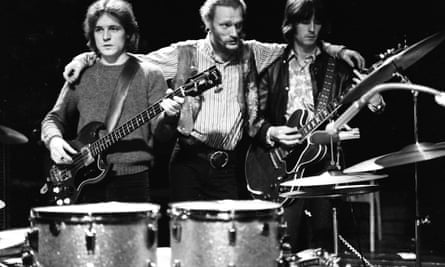
Bruce’s dexterity on the bass guitar gained him wide recognition. IIn 1965, Bruce was asked to join Marvin Gaye’s band, an offer that he turned down. “Around that time, I was suffering a lot of criticism for playing too many notes, or playing in a certain way,” he later told Bass Guitar magazine. “Marvin loved my playing, though, so I realised I must have been doing something right. It would have been amazing to see a white guy go there and be a part of that scene: it could have changed a lot of things and would have been wonderful. But I was too young, and you wouldn’t have had Cream.”
With Mann’s vocalist, Paul Jones, and Clapton, Bruce was one of the Powerhouse, an ad hoc sextet convened by pianist Ben Palmer for a jam session taped in early 1966. Among the tracks heard on an album released the next year, What’s Shakin’, was Crossroads. By summer 1966 Cream were up and running, and they too took up the song.
Bruce’s final decade as a performing musician was an active one, despite occasional bouts of ill-health. He composed and recorded prolifically, often with Trower and the Living Colour guitarist Vernon Reid, and played live dates across Europe and the US. In 2007 a rehearsal hall at the Royal Scottish Academy of Music and Drama, Glasgow, was named after him, and two years later he was presented with an honorary doctorate of letters from Glasgow Caledonian University. In 2011, he was given the International Bassist award by the National Association of Music Merchants; the Pink Floyd bassist Rogers Waters described him as “the most musically gifted bass player who’s ever been”. Bruce’s album Silver Rails was released in March this year and received many positive reviews. Once again, lyrics came from Brown, and the guest musicians included Trower and the German guitarist Uli Jon Roth.
In 1964 Bruce married Janet Godfrey. They had two sons, Malcolm and Jonas, and divorced in 1982. Later that year, Bruce married his second wife, Margrit Seyffer, who was his manager for 31 years. They had two daughters, Natascha (musical stage name Aruba Red) and Kyla, and a son, Corin. Jonas died in 1997; Bruce is survived by Margrit, his children, and a granddaughter, Maya Sage.
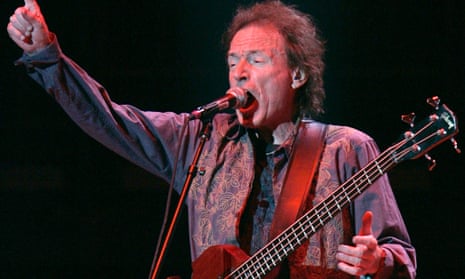
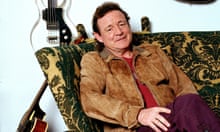
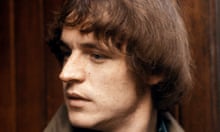

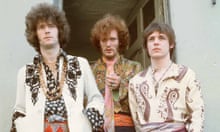
Comments (…)
Sign in or create your Guardian account to join the discussion